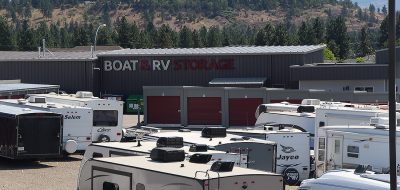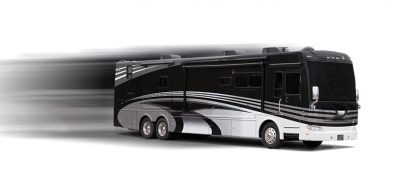Last week, we looked at what was available in compression type braking features and techniques. This week we will focus on some real world braking applications and operating tips. The first group will cover all sizes and groups of coaches, from gas units to heavy diesels.
All Categories of coaches:When approaching a grade that is descending substantially and will, or may, cause your vehicle to increase speed above that which you wish to travel, or may be safe, do the following.Slow to the speed, or slightly lower, that you intend to descend the sloop, prior to reaching the crest. Be aware of what traffic may be behind you and use caution as you reduce speed as not to cause any danger. Select a lower gear to maximize engine RPM and driveline resistance. Now maintain any excess speed by short adequate hard applications of the service brakes. Remember, the wind resistance is now your working with you, and can aid you to keep a comfortable speed.
Medium weight exhaust brake equipped coaches: Same as the above with the exception of manual selection of a lower gear. Engage the exhaust brake (Pac Brake) closest to the selected descent speed as your vehicle crests the hill, and is moving positively down (moving forward without throttle, but in favor of gaining speed). Observe both speed and engine RPM during the descent and control same, if required, with short firm service brake applications.
Tip: Get to know your speed in each gear when the engine RPM is about 90% of the maximum governed loaded speed. If you can’t always remember this speed for each gear, or to just make it easier, put a small red sticker piece at each location on the speedometer. Select your grade descent to be one of these speeds. This will normally deliver smoother braking and possibly eliminate further downshifting. If the engine RPM increases to near that listed in your engine manufacturer’s manual as being the maximum RPM during compression brake application (usually 10 to 15% higher than governed speed), apply the service brakes firmly to bring it back to near its original speed. If, on the other hand, the engine RPM reduces near the speed that would cause an additional downshift, shut off the Pac Brake switch. Do not touch the accelerator pedal as that will cause an up shift at this point. You can now toggle the brake switch on and off to maintain the desired road speed during the balance of the decline.
Medium heavy full Jake Brake equipped coaches: Same initial approach as discussed above, with the following suggested procedure.Single Jake speed. Follow the same procedure as the Pac Brake. Get to know your speed in each gear when the engine RPM is about 90% of the maximum governed loaded speed. If you can’t always remember this speed for each gear, or to just make it easier, put a small red sticker piece at each location on the speedometer. Select your grade descent to be one of these speeds. This will normally deliver smoother braking and possibly eliminate further downshifting. Two speed Jake. Follow the same procedure as the Pac Brake, except, toggle the “Hi” “Lo” instead of the activation switch.
Tip:
Tip: This system can provide exceptional downhill speed control. Understanding and utilizing the features that the two speed Jake can provide will give you the full benefits it can deliver.
Heavy coaches, that may be equipped with three speed Jake’s, operate similar to the above mentioned systems. The Jake switch can be multi toggled as required.
Heavy coaches, equipped with transmission grade retarders, should similarly make the same basic grade crest approach. Apply the joystick retarder control at the lowest setting, increasing it as necessary. As many, like the Allison, full grade retarder type transmissions use rear mounted retarders, shift patterns or gear selection may not affect the operation.
A word of caution that should be observed in the use of any compression type braking, use only when the road surface provides adequate traction. Even wet roads, particularly just when it first starts to rain, may not be safe for unrestricted use.
Note: The operation, and or tips, herein stated, may vary or not be applicable to all coach configurations. Always refer to the directions as outlined in the O.E.M. operator’s manual for your specific coach.
Those Are The Brakes Lug_Nut – Peter Mercer






Pingback: flyttstädning stockholm
Matthews Driving School
I was a student of Driving School Sydney . Here I have leaned many techniques about driving. I have also gotten some knowledge from this site. Now I drive my own car very confidently.
Pingback: Air Disc Brakes May One Day Be On All DP’s
Sharks
Great job as usual….